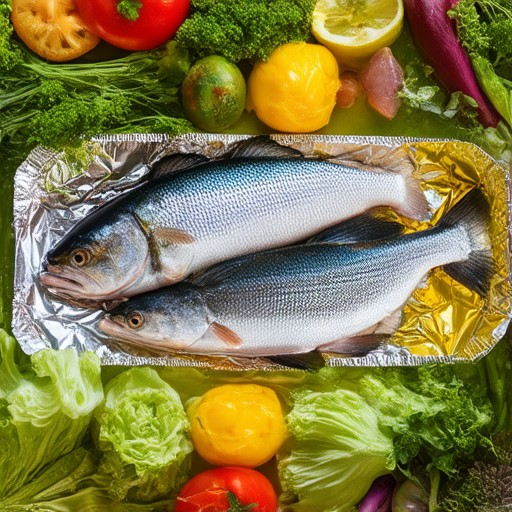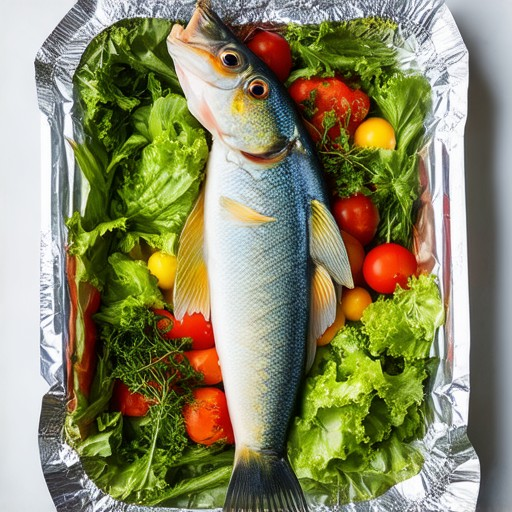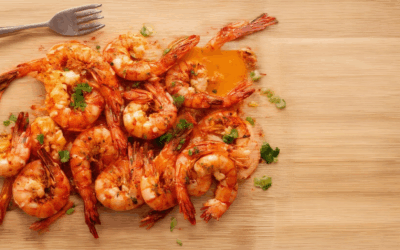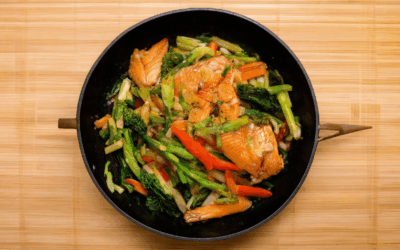Fishing for a new way to elevate your seafood dishes? Look no further than the versatile and convenient method of cooking fish in foil. Whether you’re grilling, baking, or even cooking on the stovetop, wrapping your favorite fish in aluminum foil offers a simple yet effective approach to locking in flavor and ensuring tender, juicy results every time. From quick weeknight meals to impressive dinner parties, foil-packet cooking is a game-changer for both novice and experienced cooks alike.

How Long Does Fish Take to Cook in Aluminum Foil?
The cooking time for fish wrapped in aluminum foil varies based on several factors, including the type of fish, its thickness, and the heat of your oven. Generally, it takes about:
- 12 to 15 minutes for smaller fish fillets or thin cuts.
- 15 to 20 minutes for medium-sized fillets or slightly thicker pieces.
- 20 to 25 minutes for larger fish steaks or whole fish.
For the best results, we recommend:
Step-by-Step Instructions
1. Preheat your oven to 375°F (190°C).
2. Prepare the fish by patting it dry with paper towels and seasoning lightly with salt and pepper.
3. Wrap the fish in aluminum foil, ensuring there’s enough space around the fish for air circulation.
4. Seal the edges carefully to form a packet, leaving room at the top for steam to escape.
5. Bake on a baking sheet for the recommended time based on your fish size, until the fish flakes easily with a fork.
6. Check doneness by opening the foil carefully to inspect the fish without losing too much heat or steam.
By following these guidelines, you can perfectly cook your fish in aluminum foil every time, achieving tender and flavorful results. Remember to let the fish rest for a few moments after baking before serving for optimal texture.
For more seafood cooking tips, visit our seafood recipes hub or explore similar techniques on Seafood Delight and Grilled Fish Guide .
What to Put in Foil with Fish
When preparing fish in foil, there are several ingredients and techniques that can elevate your dish. Here are some ideas for what to include:
- Garlic Butter : A classic choice, garlic butter adds rich flavor to the fish. Mix softened butter with minced garlic, parsley, and lemon zest for a simple yet delicious option.
- Herbs and Spices : Enhance the taste with a mix of your favorite herbs like dill, basil, thyme, or rosemary. You can also add spices like paprika, cayenne pepper, or chili powder for a kick of heat.
- Vegetables : Add a burst of freshness with veggies like spinach, broccoli florets, or zucchini. These can be placed under the fish to steam gently while cooking.
- Citrus : Lemon or orange slices are a great addition. They not only add a refreshing tang but also release aromatic oils that complement the fish perfectly.
- Butter and Oil : Drizzle a combination of butter and oil over the fish to ensure it stays moist and flavorful during cooking.
- Seasonings : Sprinkle a mix of salt, pepper, and your preferred seasonings like Old Bay or Cajun spice blend for added depth of flavor.
For a more elaborate setup, consider adding a layer of parchment paper beneath the foil for extra moisture retention. This method ensures your fish cooks evenly and remains tender and juicy.
Why choose foil? Foil acts as a barrier between the heat of the oven or grill and the fish, helping to seal in juices and prevent sticking. It also allows for easy cleanup and creates a perfect sealing effect for steaming vegetables alongside the fish.
Looking for more inspiration? Explore our Fish Foil Recipes collection for a variety of creative combinations tailored for seafood lovers.

Is Cooking Fish in Foil Healthy?
Cooking fish in aluminum foil can be a convenient method, but its health implications depend on several factors:
- Acidity and Aluminum Leaching: When cooking acidic foods like fish with lemon or tomatoes, some aluminum may leach into the food from the foil. While this doesn’t immediately pose a health risk, chronic exposure could be concerning.
- Foil Quality: The grade of aluminum used in the foil matters. Higher-grade foils like 300 series are safer and less likely to leach metal ions compared to cheaper options.
- Portion Size: Moderate consumption of fish cooked in foil is generally safe. However, frequent or large portions, especially over time, could increase long-term exposure risks.
For added safety, consider using non-stick pans or alternative cooking methods if concerned about aluminum exposure. Occasional use is fine, but monitor portion sizes and cooking frequency.

How Long to Cook Whole Fish in the Oven in Foil?
To determine the optimal cooking time for a whole fish wrapped in foil, consider the following factors:
- Size of the Fish :
- Smaller fish (about 1-1.5 lbs) typically take 20-25 minutes .
- Medium-sized fish (around 2-3 lbs) require 30-35 minutes .
- Larger fish (over 3 lbs) may need 35-40 minutes , especially if the fillet is thick.
- Thickness of the Fillet :
- Thicker fillets usually take 35-40 minutes .
- Thinner fillets can be cooked in 20-25 minutes .
- Oven Temperature :
- Preheat your oven to the recommended temperature (typically 375°F or 190°C).
- Since ovens can vary, check the fish a few minutes early, especially if your oven runs hot.
- Checking Doneness :
- Use a timer to track cooking time.
- After 30 minutes, check if the fish is opaque and flaky. If it’s still translucent, give it a few more minutes.
By considering these factors, you can ensure your whole fish cooks evenly and stays moist. Enjoy your meal!
Baking Fish: Should It Be Covered or Uncovered?
When baking fish, the decision to cover or uncover depends on the type of fish and the desired outcome. Here’s a breakdown:
When to Cover Fish
Covering the fish during baking helps retain moisture, which is beneficial for delicate fish like flounder, sole, and tilapia. These types of fish tend to dry out easily, so keeping them covered prevents them from becoming tough or bland.
When to Uncover Fish
For thicker fish like salmon, cod, or Chilean sea bass, uncovering allows the exterior to brown and caramelize, creating a more flavorful crust. Leaving the fish uncovered toward the end of cooking ensures a crispy skin texture, especially if you prefer that aspect.
Temperature and Timing
Bake fish at temperatures between 350°F and 400°F. For most fish, this range works well. Cover with foil if you want to keep it moist, or remove the foil during the last 3-5 minutes of cooking to allow the fish to brown.
Broiling for Finish
For an extra-crispy finish, place the fish under a preheated broiler for just 1-2 minutes before it’s done. This method works particularly well for thick cuts like salmon or swordfish.
By understanding these techniques, you can tailor your baking method to suit your preferred fish and texture preferences. Whether you choose to cover or uncover, the result will be a delicious and properly cooked dish!

Do you need to flip fish in foil?
To cook fish using foil, you typically do not need to flip it during the cooking process. Here’s a step-by-step guide to achieving perfectly cooked fish in foil:
- Prepare the Foil Packet : Place the fish on a large piece of aluminum foil. Season the fish generously with salt, pepper, and any other preferred spices or herbs.
- Add Enhancements : Optionally, add butter, lemon juice, or herbs like dill for extra flavor. Wrap the fish tightly in the foil, ensuring there are no gaps.
- Cook on Grill or Oven : If grilling, place the foil packet on the grill over medium heat. If baking, place it in a preheated oven at 375°F (190°C) for about 15-20 minutes, depending on the thickness of the fish.
- Check Doneness : The fish should be opaque and flake easily with a fork when cooked through. There’s no need to flip it during cooking as the foil ensures even heat distribution.
- Let It Rest : Once cooked, let the fish rest for a few minutes before serving to allow the flavors to meld.
By following these steps, you can enjoy perfectly cooked fish every time without the hassle of flipping.




0 Comments